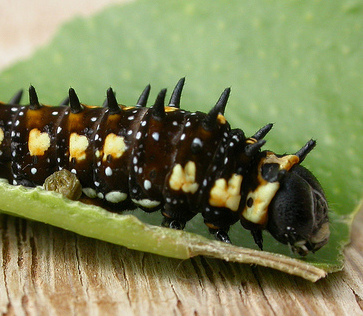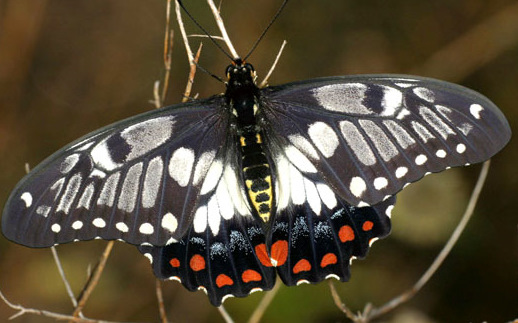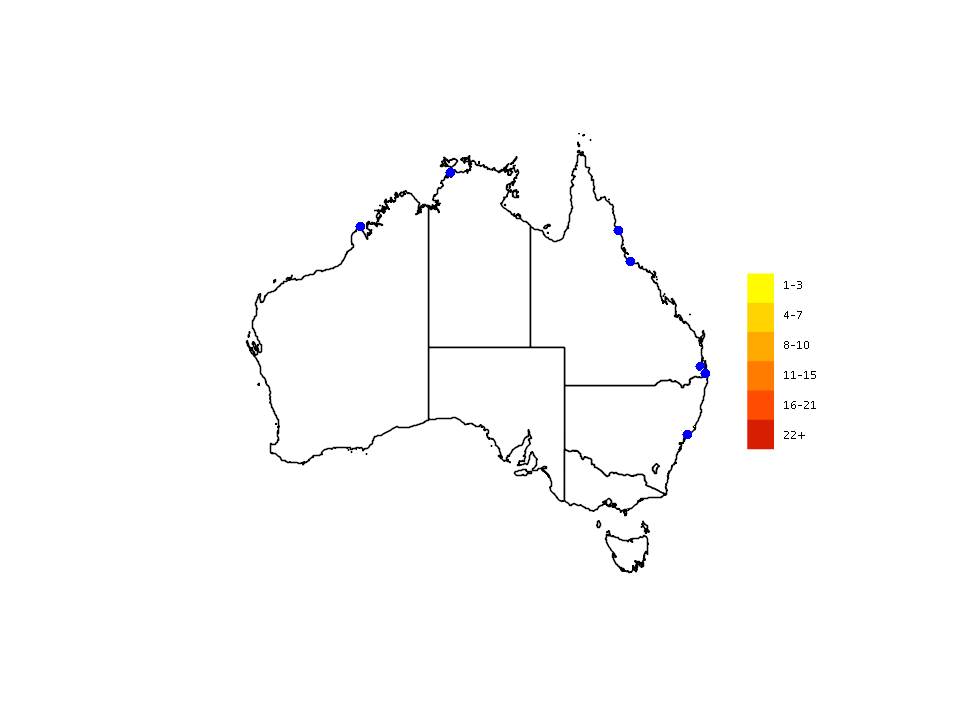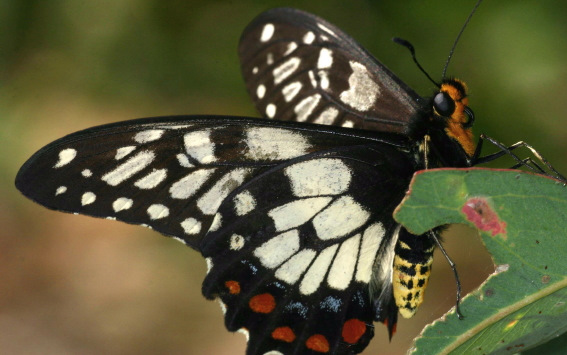Behaviour
Diet
The caterpillar eats the leaves and soft new growth of native and introduced plants from the Family Rutaceae, particularly citrus trees; it will also occasionally eat the flowers and buds. The butterfly feeds on nectar from a variety of flowers, usually feeding while on the wing (like a hummingbird).
Movement
If disturbed, the caterpillar reveals a red-orange “tentacle” (known as an osmeterium) from behind its head which emits a foul smell to deter predators.
Flight
Usually slow and lazy, although it can take off with great speed if disturbed. It is usually seen in low numbers and seldom stops or rests. Male butterflies strenuously defend their territory; they frequently spiral into the tree canopy in groups of two or three, before separating to descend.
Breeding
Females lay cream-coloured eggs on the young shoots and leaves of the host plant, and the eggs usually hatch three to four days later. Once the caterpillar is fully developed, it forms into a green or grey-brown pupa attached to a stem of the host plant. The time it remains a pupa varies from about two weeks in summer, to four weeks in autumn, but often those formed in autumn will stay dormant over winter, emerging as butterflies in spring. It flies during the warmer months and there are continuous broods during this period.
Field Guide
Improve your identification skills. Download your Dainty Swallowtail Butterfly field guide here!





